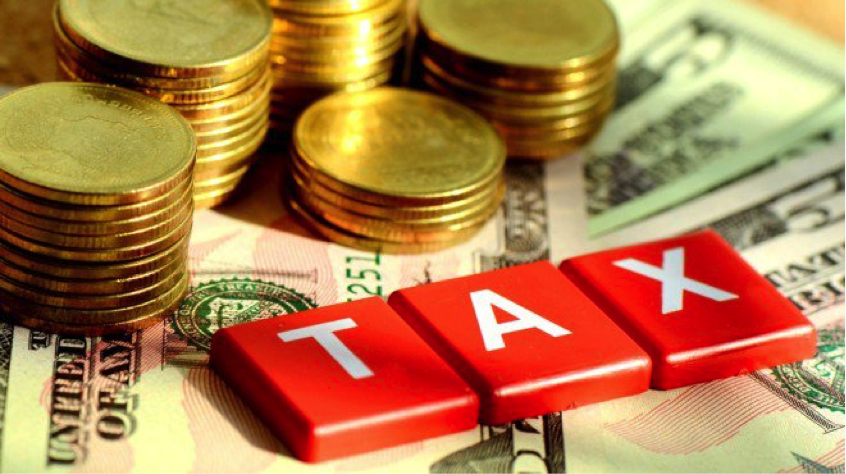As an entrepreneur, the eventual exit from the business, however successful, can be made sour unless the tax structure of the sale is optimized. Many business owners have paid over 40% of the sale amount to the Government as taxes, merely due to bad financial planning. In this article, we’ll attempt to decipher some of the less understood points about the taxes incurred while selling your business.
There’re 2 primary strategies which decide how much taxes are paid –
1) Type of Sale (Asset sale vs Share sale)
2) Payment Terms (Immediate vs Deferred)

Tax planning is an important part of business than most entrepreneurs ignore
Let’s break these 2 down
1) Asset Sale vs Stock Sale
One of the primary difficulties is deciding which type of sale to carry out, as buyer and seller benefit from opposing structures. An asset sale is the purchase of the individual assets and liabilities, whereas a stock sale is the purchase of the owner’s shares of a company.
What is an Asset Sale?
The seller retains the hold over the company while the buyer purchases the assets of the business (like fixtures, furniture, licenses, goodwill, inventory, etc.). The buyer can choose not to buy the liabilities that come with the assets, and can decide whether they want to buy the cash balance, debt, etc.
Tax implications of Asset Sale
Buyers can allot a higher value to assets that depreciate quickly (like furniture, which depreciate in 5-7 year) and lower value to assets that depreciate slowly (like goodwill, which can take up to 15 years) and avail tax benefit. In the near term, through reduced taxes (due to depreciation of assets), it increases the cash flow in the buying company and helps in running the business. This is the primary reason why buyers prefer an asset sale.
This isn’t advantageous to sellers as assets generate a higher tax rate. Though intangible assets (like goodwill) are taxed at capital gains rate, tangible assets (like furniture) are taxed at normal income tax levels for higher tax slabs. As a consequence of this, the effective tax rate often crosses 25%.
What is a Stock Sale?
This is applicable only for private limited companies that are registered with shares of the company issued to promoters, investors and other entities (like employees, advisors, etc.), and is not applicable for proprietorship/partnership companies.
In a stock sale, the buyer purchases the shares of the company (the legal entity). The buyer would legally own the company after the transaction, including all assets and liabilities underlying. Assets which are not desirable for the buyer are typically sold off and the liabilities have to be paid by the buyer.
Tax implications of Stock Sale
Sellers prefer a stock sale as all the proceeds from the same is taxed under capital gains, which would be lower than the income tax rate (in most cases). The seller also becomes immune from future cases of product liabilities, environmental concerns, lawsuits, etc. which would be on the responsibility of the buyer.
On the other side, buyers don’t get to value the assets as per their requirements as the asset values would’ve been mentioned in the book value of the company during their previous annual filing. This would mean that the depreciation of assets would happen at a lower value, and hence they can’t avail the tax benefits they get during an asset sale. Coupled with the possibilities of future liabilities, buyers don’t choose stock sale

The 2 types of selling a company come with their own advantages and disadvantages
2) Payment Terms
Tax implications upon selling a business are impacted deeply by when the payment is made for the acquisition. Buyers can demand the payment immediately, or opt for a phased payment through a few years. Both methods have their own merits and demerits.
Immediate Payment on Sale
In this method, the seller pays all the money for the acquisition at completion of the transaction. Given that the payment comes in one shot, it attracts a higher rate of tax in that financial year. If the sale is made for a good amount, it’ll fall in the highest tax bracket and the seller would end up paying 30%+ in effective tax rate at sale.
The main reason why many sellers prefer this mode is that there is no risk of the buyer defaulting on the payment.
Deferred Payment or Instalment Strategy
Buyers and sellers can also choose payment terms such that the pay-out is made over a few years and not upfront. Through this strategy, only the amount received during any given year is taxable, and hence, a deal can be structured that payment made every year shall be lesser than what falls in the higher tax slabs. Thus, the seller shall pay lesser in net taxes through the course of time.
Though this results in net tax savings, this is a risky strategy as the seller has to deal with the chance that the buyer might not have the ability to pay at a later stage. There’re insurance companies that sellers can work with that cover the risk of such defaults in payments.
Depending on the urgency of the sale and the effective tax rates, buyers and sellers need to work together to come up with an amicable solution to carry out the transaction in an effective manner that benefits both parties.
Disclaimer: Every business unique – so is every sale transaction. Tax liabilities upon sale are subject to national and local laws depending on the geography. We’d strongly advice any business owner to work with a tax consultant during the sale of their business.








































